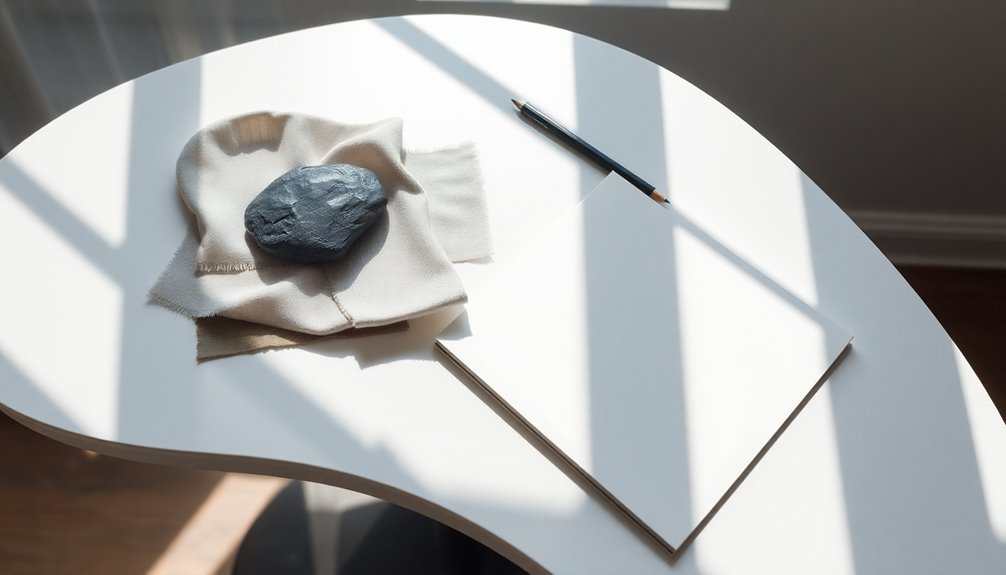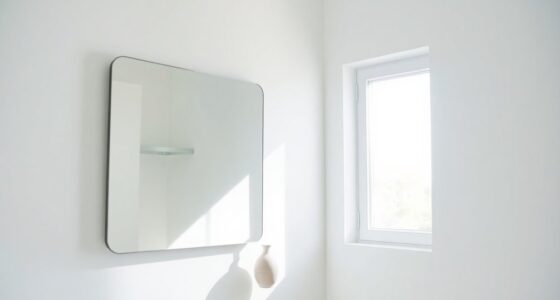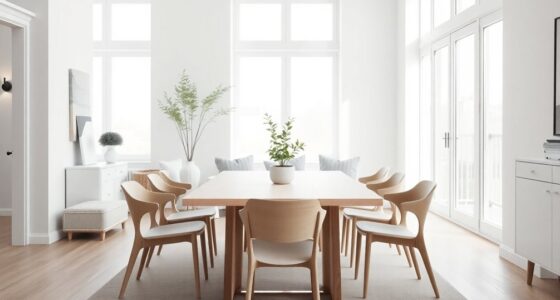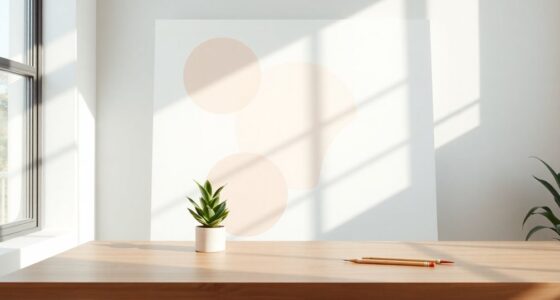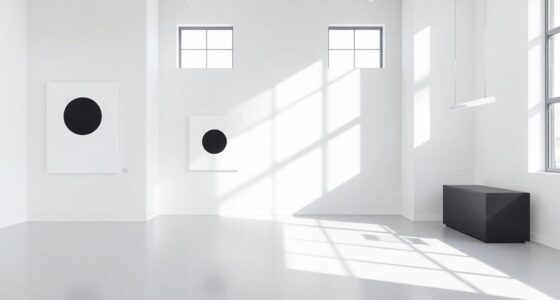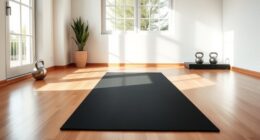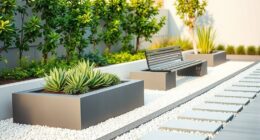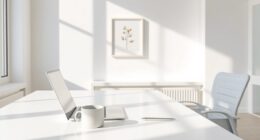Curating a minimalist mood board for your next project starts with gathering inspiration from platforms like Pinterest. Choose a neutral base, like white or beige, to highlight your colors and textures. Decide whether to create a digital or physical board based on your preferences. Collect samples and swatches that reflect your chosen palette, and be ready to adjust elements for harmony. Keep your vision focused and organized to enhance creativity—there's more to explore to make it truly exceptional.
Key Takeaways
- Explore platforms like Pinterest for minimalist inspiration and curate images that embody simplicity.
- Establish a neutral color palette, focusing on calming shades to enhance cohesion.
- Collect functional and decorative items, ensuring they align with the minimalist aesthetic.
- Experiment with both digital and physical mood boards to visualize textures and colors effectively.
- Regularly audit your mood board for harmony, adjusting elements as needed for a cohesive design.
Gathering Inspiration for Your Minimalist Mood Board
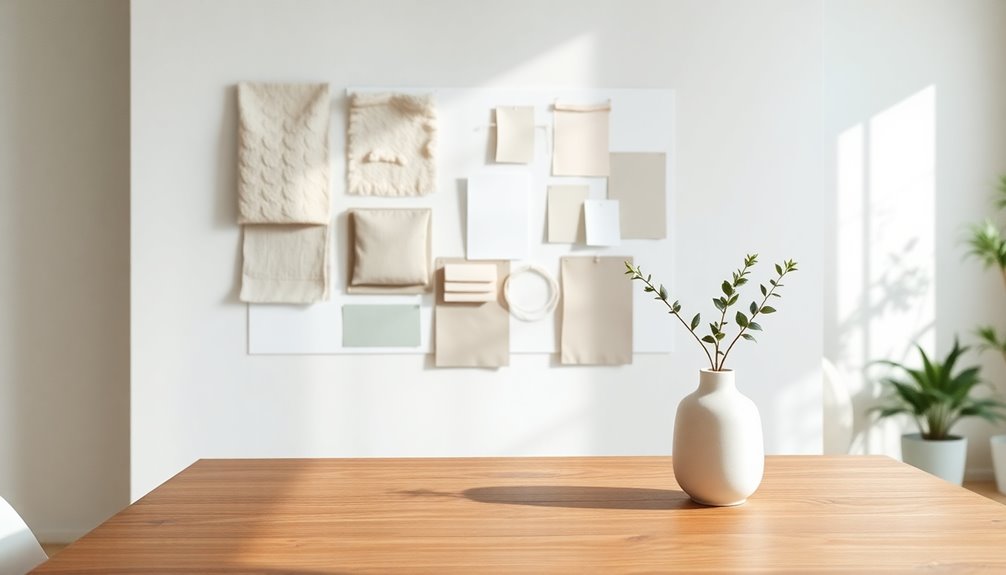
How do you begin gathering inspiration for your minimalist mood board? Start by exploring platforms like Pinterest and design magazines that showcase clean lines and uncluttered spaces.
Curate images that capture the essence of minimalism, ensuring each piece aligns with your vision. Establish a neutral color palette as your foundation, adding accent colors to create visual interest.
Curate images that embody minimalism, establishing a neutral palette while adding accent colors for visual intrigue.
Select items that embody the minimalist aesthetic, serving functional and decorative purposes while keeping simplicity in mind. Don't forget to incorporate samples of materials, such as fabrics and finishes, to provide a tactile element. Consider integrating natural materials like bamboo and reclaimed wood to enhance the eco-conscious aspect of your design.
Regularly revisit and refine your collection to maintain coherence with your evolving design concept, embracing spontaneity while staying true to your minimalist mood.
Digital vs. Physical Mood Boards: Which Comes First?
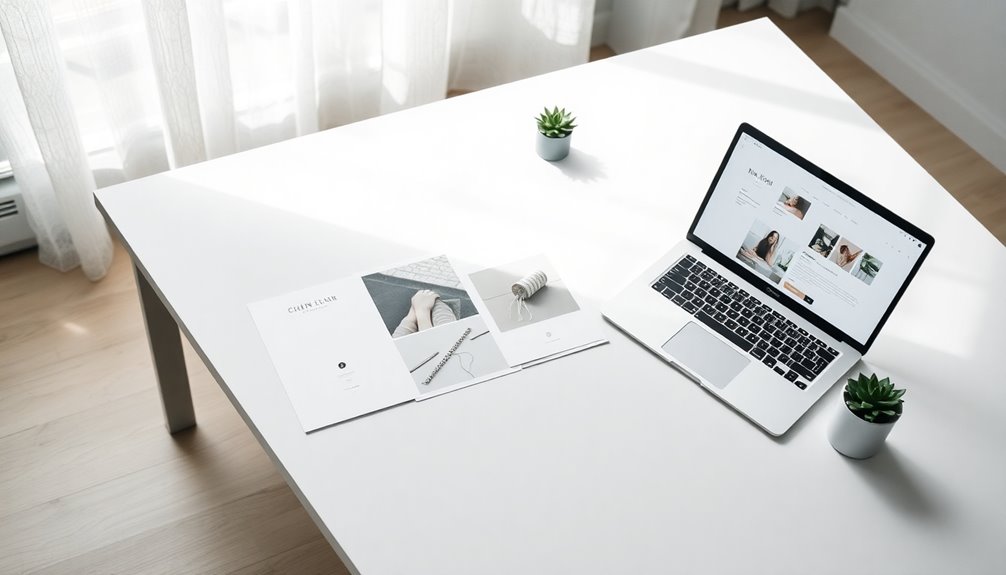
After gathering inspiration for your minimalist mood board, you might wonder whether to start with a digital or physical format.
Digital mood boards often serve as a preliminary outline, letting you quickly adjust design concepts and incorporate various styles. They're flexible, making it easy to experiment before committing to a look.
On the other hand, physical mood boards provide a tangible representation of textures and colors, allowing you to assess how components work together in real life.
Your choice can depend on personal preferences and project needs, as both formats can complement each other throughout the design process. Additionally, using bold colors for accent walls can enhance the overall aesthetic when finalizing your design concept.
Just remember, while digital boards might show color discrepancies, physical boards offer an accurate representation of your final design.
Selecting a Neutral Base for Your Board
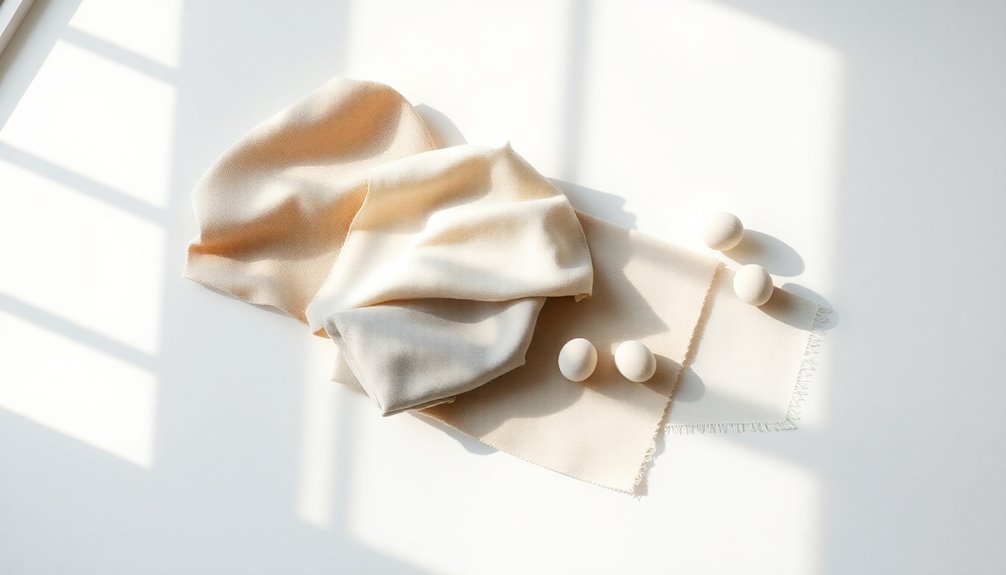
When selecting a neutral base for your mood board, think about colors like white, beige, or gray to keep the focus on your curated items. A consistent choice across boards not only enhances cohesion but also makes it easier to compare different design elements. Additionally, incorporating calming color schemes can further enhance the overall aesthetic and promote a sense of tranquility in your designs.
Choosing Neutral Colors
A neutral base is essential for creating an effective mood board, as it allows colors and textures to shine without distortion. By selecting neutral colors, you provide a versatile backdrop that complements various design styles. This choice not only creates a calming environment but also emphasizes simplicity and functionality. Incorporating a color palette that aligns with the overall theme can further enhance your design vision.
| Color | Mood | Texture |
|---|---|---|
| White | Fresh | Smooth |
| Beige | Warm | Soft |
| Gray | Serene | Matte |
| Taupe | Earthy | Textured |
| Ivory | Elegant | Subtle |
Utilizing these neutral tones can greatly affect the overall mood of your design mood board, ensuring cohesion and continuity across different project spaces.
Importance of Consistency
Consistency is essential in establishing a strong visual identity for your mood board. By selecting a neutral base, like a plain white tray, you guarantee color accuracy and prevent distortion of your design elements.
A consistent neutral base helps create a cohesive look across multiple boards, making it easier to compare and assess your design choices.
- Focus remains on samples and textures, enhancing visual impact.
- A well-chosen neutral base complements various design aesthetics.
- Simplifies adjustments and maintains thematic alignment throughout the project.
Using a neutral base consistently throughout your design process not only enhances your mood board's effectiveness but also allows for seamless adaptation as your project evolves. Additionally, a neutral background can improve color accuracy in your samples, ensuring true representation of textures and hues.
Collecting Samples and Swatches
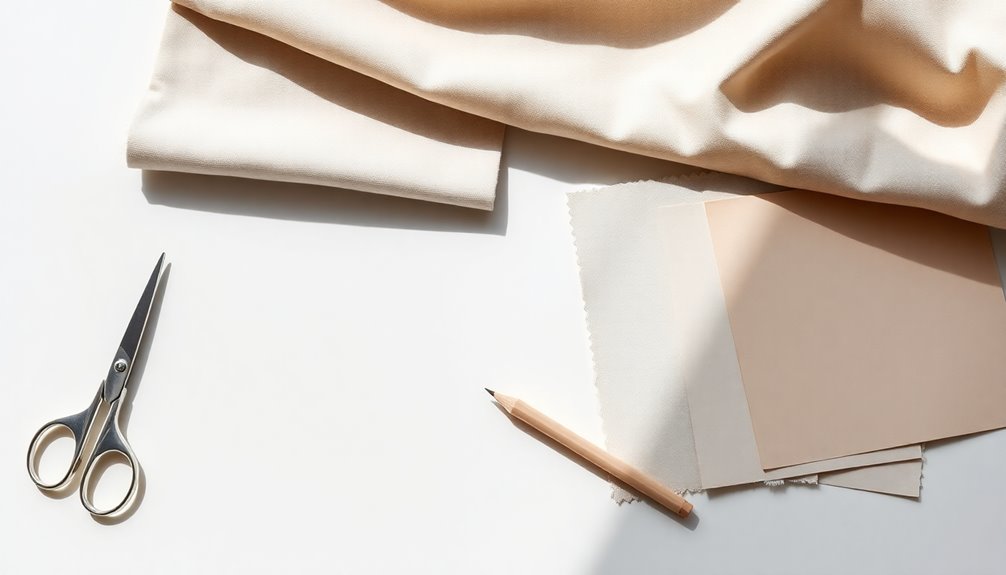
To create an effective minimalist mood board, prioritize collecting samples that reflect a neutral base, like a plain white tray, which helps maintain design integrity and prevents color distortion.
Consistent trays across your mood boards will streamline the design process and guarantee a cohesive presentation until project completion.
Include a variety of relevant samples, such as paint, wallpaper, fabric swatches, and finishes, to accurately represent the textures and colors that will be used in your final design.
Sourcing samples from trade accounts or purchasing them as needed enhances the quality and authenticity of the materials included.
Incorporating a clean living space can also inspire creativity and enhance the overall aesthetic of your project.
Auditing and Adjusting Your Mood Board
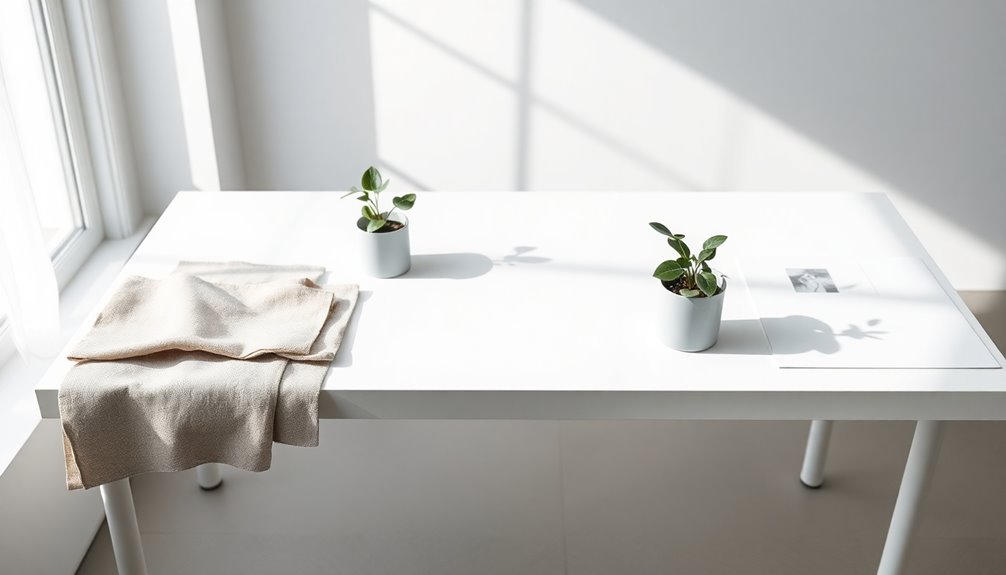
Auditing your mood board is an essential step in refining your design vision. Take a moment to analyze each element carefully. Identify any mismatches that detract from your overall aesthetic. This process isn't just about removing items; it's about enhancing your minimalist theme.
Auditing your mood board is vital for refining your design vision and enhancing your minimalist aesthetic.
- Regularly assess the textures, colors, and patterns to guarantee harmony.
- Be open to adjusting based on material availability; creative substitutions can keep your design goals intact.
- Experiment with adding or removing items to discover new combinations that resonate. Attention to detail ensures that each element contributes meaningfully to your overall design.
Capturing and Ordering With Confidence
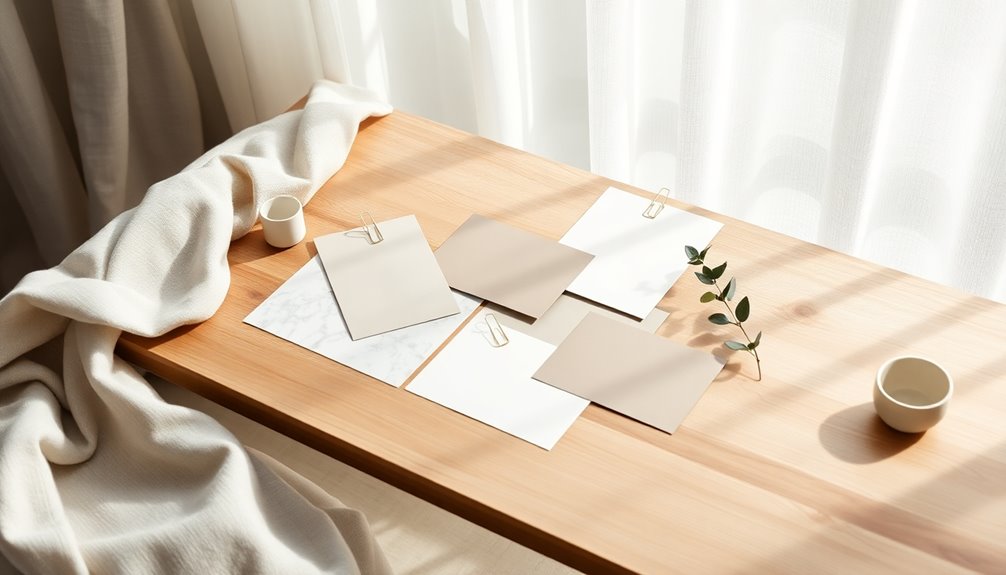
As you commence on the journey of capturing and ordering your minimalist mood board, focus on gathering images and materials that truly resonate with your vision. Prioritize clean lines and a limited color palette to maintain coherence. Organize your items by themes to clarify how they fit within your overall design.
| Element | Purpose |
|---|---|
| Images | Set the mood |
| Textures | Add depth and interest |
| Colors | Create harmony |
| Layout | Enhance functionality |
Utilize digital tools or physical boards for easy adjustments. Trust your instincts and embrace the iterative process; confidently refine your mood board as new ideas emerge, ensuring it aligns with your project goals. Consider incorporating elements from farmhouse design principles to add warmth and character to your minimalist aesthetic.
Frequently Asked Questions
How Do You Curate a Moodboard?
To curate a mood board, start by collecting inspiration from various sources like Pinterest or design magazines.
Choose a neutral base to keep colors and textures true. Gather samples that reflect your vision, such as paint swatches and fabric pieces.
Experiment with the layout until you find a cohesive arrangement that resonates with your theme.
Finally, don't hesitate to get feedback from others; it'll help refine your ideas and guarantee alignment with your goals.
What 5 Elements Must You Include on a Mood Board?
When you think of a mood board, imagine vibrant colors clashing with soft textures.
To create one, you need five essential elements. First, choose a cohesive color palette that captures your vision.
Next, incorporate textures and materials to add depth.
Third, gather inspiring imagery that reflects your style.
Fourth, select key furniture and decor pieces that resonate with your theme.
Finally, include specific design elements to unify your board and elevate your concept.
How to Make a Mood Board for a Project?
To make a mood board for your project, start by gathering inspiration from various sources like Pinterest and design magazines.
Choose a neutral base to keep your colors consistent. Collect samples such as fabric swatches and paint colors that reflect your vision.
Regularly review and adjust these components for cohesion.
Finally, utilize digital tools like Canva Pro for easy collaboration and feedback, ensuring your mood board evolves with your ideas.
What's One Thing That Shouldn't Appear on a Mood Board?
One thing that shouldn't appear on a mood board is unrelated imagery. Including elements that don't align with your project's aesthetic can confuse your audience and dilute your message.
Stick to items that reflect your established color palette and style. Avoid clutter; too many elements overwhelm the viewer and obscure your design's core concepts.
Always focus on what's relevant to maintain a clear, professional, and cohesive presentation that resonates with your intended audience.
Conclusion
So, you've mastered the art of minimalism—congrats! Now, as you stare at your perfectly curated mood board, remember: less is more… until it's just empty space. Embrace the irony of your meticulously sparse design. After all, nothing screams creativity like a board that could double as a blank canvas. Keep adjusting, keep collecting, and don't forget to appreciate the beauty of nothingness. Who knew achieving your vision would feel so much like staring at a wall?
